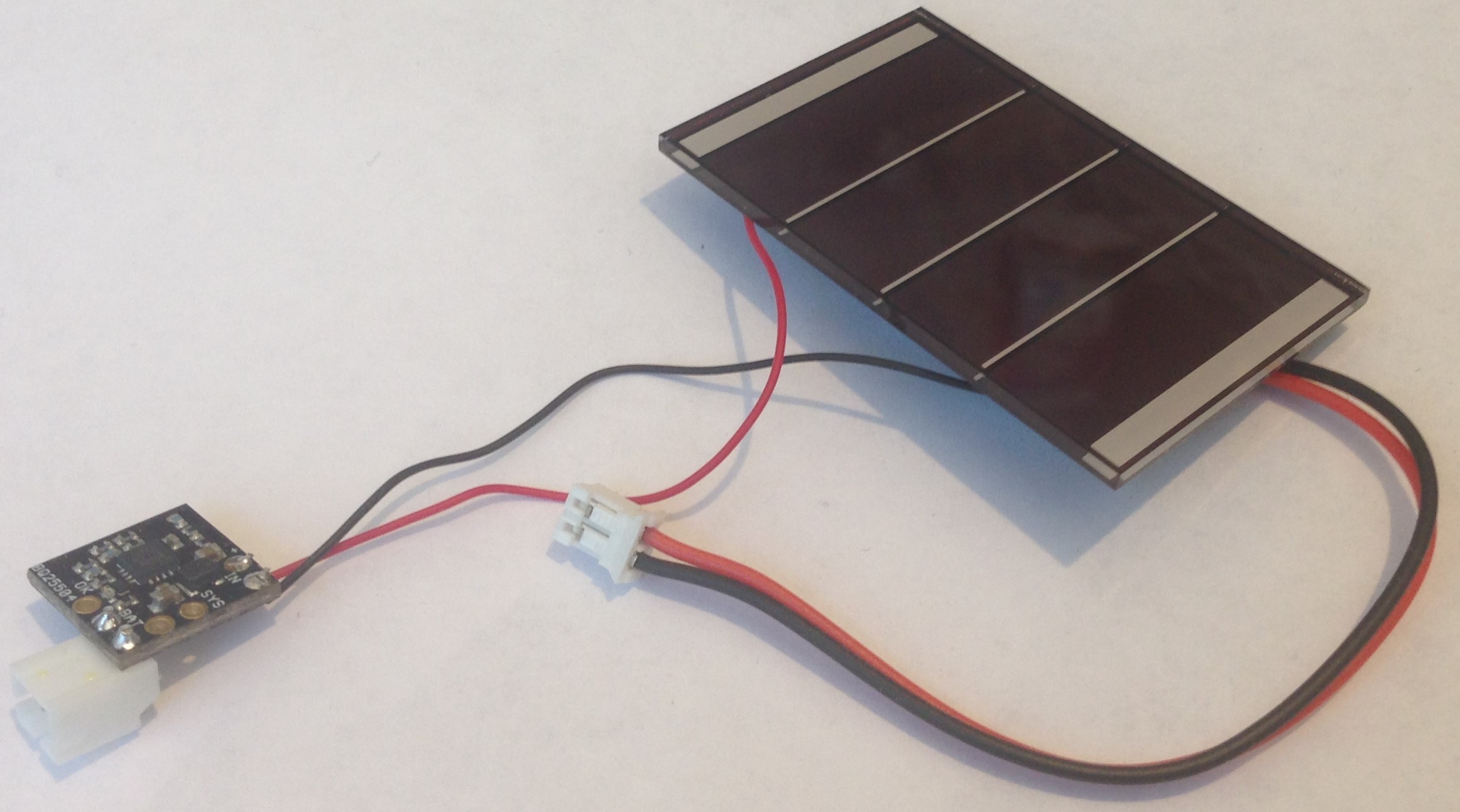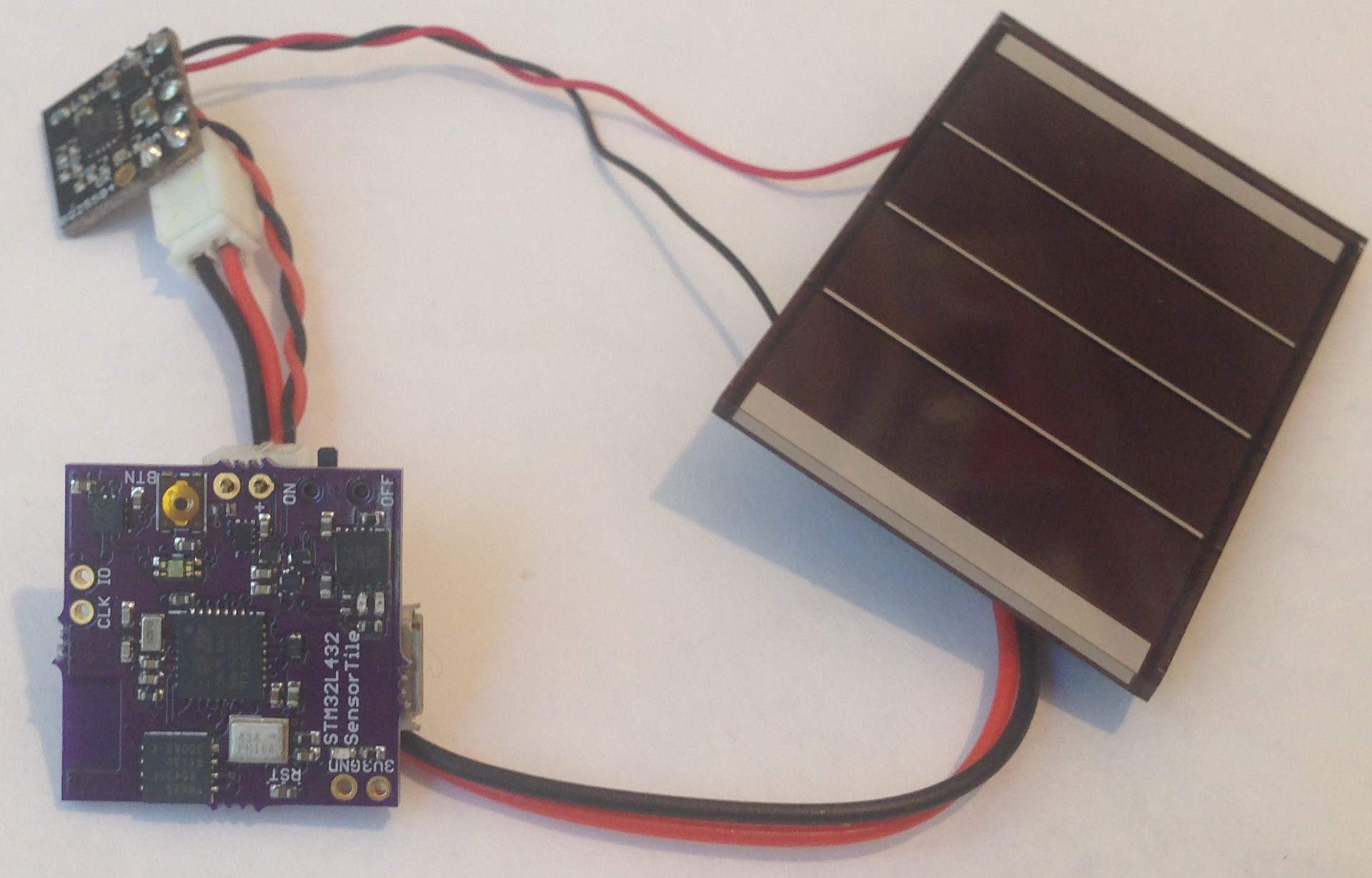14 June 2018
It's always a gamble to have a large batch of boards produced in China. I have been working with a fab house in Beijing for a couple of years and I still get surprised by them. In this case, they couldn't source the specified inductor on the BQ25504 Solar Cell LiPo Battery charger so they went ahead and substituted with one that they thought was close. And without asking or telling me! I found out after receiving the 500 unit batch by inspection of the new boards:
The new inductor seems to be slightly inferior to the old one:
- the tolerance on the new part is +/- 20%, on the old part +/- 10 % lower is better
- the DC resistance on the old part is 0.56 Ohm typical, 1.52 Ohm for the new part, lower is better.
- saturation current of old part is 0.64 A, new part is 0.53 A, higher is better.
Does any of this matter? I don't know. So I thought I would do a test of performance just to check.
I pulled a random board out of the box and soldered it to a 50 mm x 33 mm, 2.2 V solar cell and LiPo battery connector:


It looks like the green led is not working (I have found a few, maybe ~2% of the boards have this problem, just my luck) since I measured 4.15 V on the system and battery and battery OK outputs with this rig using light from my white led desk lamp. This is actually a blessing in disguise; while it is useful to have led indication to tell when the board is charging it does use up ~200 uA for little benefit. In use I would knock the led off of the board anyway to save this power. Still, it is in the design and is supposed to work.
So the main charging function of the board seems to work just fine. But this isn't enough. I want to verify that the charger can generate enough power to run a useful device (or rather, measure the power generated in a typical use case).
I would use my LoRaSensorTile as test vehicle but the average power usage of this is 40 uA, or about 1 mA per day. Really not enough for a good power test! Instead I will go back to my STM32L4 SensorTile with the CCS811 which causes the average power usage to be more like ~1-2 mA. Then with ~6 hours of sun at ~7 mA power generated I should be able to keep this going indefinitely. I really just need to capture a few days worth of data to verify that the charger is working well.

I'll connect the SensorTile and run the experiment over a week or so. The SensorTile has BLE so I can keep track of what it is doing in real time on the smart phone but the most useful analysis will come from the data captured and stored onto the SPI flash that I will look at in detail when the experiment is over.
First check of function and all looks good:
33.4 972.9 27.1 0 0 3.91 59.5
33.6 972.9 26.5 0 0 3.91 59.5
33.7 972.9 26.5 0 0 3.91 59.5
34.0 972.8 26.1 0 0 3.91 59.5
34.5 972.9 25.6 0 0 3.91 59.5
34.6 972.8 25.5 0 0 3.91 59.5
34.8 972.8 25.3 0 0 3.91 59.5
35.0 972.8 24.9 0 0 3.91 59.5
35.2 972.9 24.7 0 0 3.91 59.8
35.4 972.9 24.5 400 0 3.91 59.8
35.8 972.9 23.9 400 0 3.91 59.8
35.8 972.9 23.5 400 0 3.91 59.8
35.5 972.9 23.5 400 0 3.91 59.8
35.4 972.9 24.2 400 0 3.91 59.8
35.5 972.9 24.0 400 0 3.91 59.8
35.6 973.0 24.1 400 0 3.91 59.8
36.0 973.0 24.0 400 0 3.91 59.8
36.2 972.9 23.8 400 0 3.91 59.8
36.4 972.9 23.4 400 0 3.91 60.1
36.7 972.8 23.0 400 0 3.91 60.1
36.8 972.9 22.5 400 0 3.91 60.1
37.0 972.8 22.6 400 0 3.91 60.1
36.8 972.8 22.7 400 0 3.91 60.1
36.5 972.8 22.6 400 0 3.92 60.1
36.3 972.8 22.5 400 0 3.92 60.1
36.3 972.8 22.8 400 0 3.92 60.1
36.4 972.9 22.5 400 0 3.92 60.1
This is the output from my smartphone showing temperature in C, pressure in mbar, humidity in %rH, the eCO2 in ppm and the TVOC in ppb (from the CCS811), the battery voltage and battery % full charge (from the MAX17048 fuel gauge). I placed the device in the remnants of the sun on the table on the back deck so I am pleasantly surprised to see all of the sensors reporting sensible values and that the 105 mAH LiPo battery charge is slowly increasing. When the sun "sets" on the device in about an hour the device will continue to run overnight and use ~1 mA per hour, etc so I expect to see a sinusoidal battery voltage and % full charge on the SPI flash data record after a few days.
I love it when things actually work!
 Kris Winer
Kris Winer
Discussions
Become a Hackaday.io Member
Create an account to leave a comment. Already have an account? Log In.